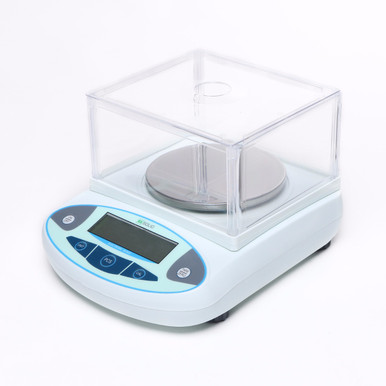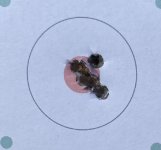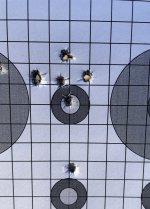Waiting for my new gun to show up so decided to sort some rounds to see what all the fuss is about. I feel more confused now than ever.
First - I watched a YouTube video of a guy sorting RWS Special Match and he broke down down a handful of boxes into about four or five groups with each group separated by only a couple of thousandths (grams). So for example his first group of sorted rounds was between 3.423 and 3.424. While he had a few outliers, it seemed most of the few boxes he checked were within about one hundredth - say 3.423 to 3.433. So I started out with about five sorting trays with the same thought as to range in weight - with some SK Standard Plus.
Big surprise very early on - I'd need a dozen or more trays to break down my lot into such small increments. My 280 rounds left in this brick ranged from 3.320 all the way up to 3.379. I ran out of sorting trays in increments of 5 thousandths!
I ran some of this particular brick at an extreme silhouettes match back in November and chalked up the (many!) fliers - particularly at 200+ yards - to either the gun (10/22) or my inability to read the wind; now I'm not so sure is wasn't the bullets! Come to think about it, I did better at 200 yards the month before with CCI SVs.
So question for any of you that have sorted in the past - is my weight distribution as expected for SK Standard+? Should I expect a narrower range for higher quality (higher cost!) ammo or was that guy on Youtube blowing smoke? I've got to buy other brands to test to see just what the new gun prefers so I'll likely carry on with the experiment - unless it's simply an exercise in futility.
In the meantime, I'll use the 25% (1) of the batch that are the very high and low outliers for barrel break-in and sighting in the scope when the gun gets here. I'll then use some of the rest to do some testing to see if the weight variance even within groups has any impact at all on POI. I'll be doing my testing indoors at 50 so that MIGHT rule out some of the distance/wind issues I had at the November match.
Needless to say I'm not going to spend the time right now sorting the newest brick of SK Standard Plus that is on the shelf here - different lot in any case so pretty sure I can't combine weight groups across lots.
I'll post an update - though the gun won't likely get here until early next week so until then I continue to run down all sorts of other "accuracy" rabbit holes . . .
First - I watched a YouTube video of a guy sorting RWS Special Match and he broke down down a handful of boxes into about four or five groups with each group separated by only a couple of thousandths (grams). So for example his first group of sorted rounds was between 3.423 and 3.424. While he had a few outliers, it seemed most of the few boxes he checked were within about one hundredth - say 3.423 to 3.433. So I started out with about five sorting trays with the same thought as to range in weight - with some SK Standard Plus.
Big surprise very early on - I'd need a dozen or more trays to break down my lot into such small increments. My 280 rounds left in this brick ranged from 3.320 all the way up to 3.379. I ran out of sorting trays in increments of 5 thousandths!
I ran some of this particular brick at an extreme silhouettes match back in November and chalked up the (many!) fliers - particularly at 200+ yards - to either the gun (10/22) or my inability to read the wind; now I'm not so sure is wasn't the bullets! Come to think about it, I did better at 200 yards the month before with CCI SVs.
So question for any of you that have sorted in the past - is my weight distribution as expected for SK Standard+? Should I expect a narrower range for higher quality (higher cost!) ammo or was that guy on Youtube blowing smoke? I've got to buy other brands to test to see just what the new gun prefers so I'll likely carry on with the experiment - unless it's simply an exercise in futility.
In the meantime, I'll use the 25% (1) of the batch that are the very high and low outliers for barrel break-in and sighting in the scope when the gun gets here. I'll then use some of the rest to do some testing to see if the weight variance even within groups has any impact at all on POI. I'll be doing my testing indoors at 50 so that MIGHT rule out some of the distance/wind issues I had at the November match.
Needless to say I'm not going to spend the time right now sorting the newest brick of SK Standard Plus that is on the shelf here - different lot in any case so pretty sure I can't combine weight groups across lots.
I'll post an update - though the gun won't likely get here until early next week so until then I continue to run down all sorts of other "accuracy" rabbit holes . . .
Last edited:




